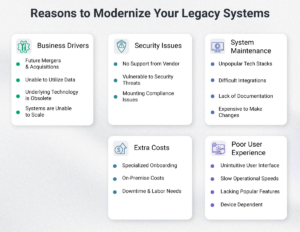
Data contract flexibility makes a significant difference in how financial institutions respond to market shifts and manage spend.
Why? Because with the right flexibility, institutions can align their contractual commitments with their actual needs and market conditions, leading to improved efficiency, cost savings, and a stronger competitive edge.
Let’s get into it. 👇
Understanding data contract flexibility
In the financial services industry, data contract flexibility refers to the adaptability of the terms and conditions within data-related agreements (like bureau data).
Unlike traditional contracts that often have fixed terms, flexible contracts allow for adjustments based on the changing needs and circumstances of the financial institution. This flexibility can include various elements such as adjustable pricing models, the ability to roll over unused services, and caps on increases in charges.
Traditional vs flexible contracts
Traditional data contracts typically ‘lock’ an institution into fixed terms, often with minimum spend requirements and inflexible pricing. These contracts can be limiting, especially in a fluctuating economic climate where an institution’s data needs can vary considerably.
Flexible contracts, on the other hand, are designed to accommodate such fluctuations. They are inherently more responsive to the changing needs of an institution, thereby offering a level of dynamism and adaptability that traditional contracts often lack.
The shift to flexibility
The move towards flexible data contracts represents a significant shift in how financial institutions approach their data sourcing strategies. This shift is driven by the recognition that the financial market is ever-changing, and contracts need to reflect this reality to remain relevant and cost-effective. Flexibility in data contracts allows institutions to scale their data usage up or down, aligning their expenditure with actual usage rather than predetermined estimates.
With flexible contracts, financial institutions can quickly adapt to new market trends, regulatory changes, and evolving customer needs without being hampered by the constraints of a rigid contract.
Key elements of flexible data contracts
Flexible data contracts in the financial services sector are characterised by several key elements that allow for adaptability and responsiveness to changing circumstances. Understanding these components is crucial for institutions looking to negotiate more dynamic agreements, so let’s take a look.
Flexible data contract key aspects:
- ➡️Carry forward of unused spend: This allows institutions to transfer unused portions of their contract to subsequent periods. It's particularly useful in managing fluctuating demand, ensuring that the institution doesn't pay for services it doesn't use.
- 📉Lower minimum spends and graduated pricing: Instead of a one-size-fits-all pricing model, flexible contracts often include graduated pricing structures based on actual usage. This approach means that institutions pay less when they use less, making it a more economical and efficient option.
- �Capped RPI increases: Retail Price Index (RPI) increases are a common feature in long-term contracts, reflecting inflation and cost increases. However, in a flexible contract, these increases can be capped, providing institutions with more predictable and manageable costs.
How each element provides contract flexibility
Each of these components plays a significant role in creating a contract that aligns more closely with the institution's operational realities:
- ➡️Carry forward of unused spend: This element addresses the challenge of demand unpredictability. It allows financial institutions to maximise their investment in data services, reducing wastage and improving financial efficiency.
- 📉Lower minimum spend and graduated pricing: By tying costs to actual usage, institutions can better manage their budgets, especially in times of varying demand. It ensures that financial commitments are scalable and sensitive to the institution's current needs.
- �Capped RPI increases: With capped increases, financial institutions can better forecast and budget for the future, avoiding unexpected cost escalations that can disrupt financial planning.
Bottom line: These elements collectively contribute to a more resilient and responsive contract structure. They allow you to remain agile, adapting expenditure and data strategies in line with market dynamics and internal demands.
Now we know some of the key elements, let’s take a closer look at the benefits.👇
Benefits of implementing flexible data contracts
When it comes to implementing flexible data contracts there are plenty of benefits:
1. Enhanced cost efficiency and waste reduction
By aligning payment structures with actual data usage, financial institutions can avoid overspending on unused services. This is particularly beneficial in scenarios where data needs fluctuate, ensuring institutions are not locked into paying for data they don't use. The carry forward feature further helps in reducing waste, as it allows institutions to leverage unused data services at a later time, ensuring that investment is fully utilised.
2. Responsiveness to market changes and customer needs
Flexible contracts enable institutions to adapt quickly to change. For instance, in a downturn, an institution might need to scale down its data usage, and flexible contracts allow for this without financial penalties. Conversely, in times of growth, the ability to scale up helps to capitalise on emerging opportunities.
3. Better alignment with financial and operational strategies
Flexible data contracts allow financial institutions to better align their data procurement strategies with their broader financial and operational goals. For example, capped RPI increases and graduated pricing models provide predictability and stability, essential for long-term financial planning and budgeting. This alignment ensures that data strategies support, rather than hinder, the institution's overall objectives.
👉In summary, flexible data contracts offer a range of benefits that go beyond cost savings. They provide a strategic advantage, enabling you to be more agile, responsive, and aligned with business goals. This flexibility is crucial in a sector where adaptability and efficiency are key determinants of success.
With all this in mind, let’s take a look at some strategies to negotiate flexible data contracts.
Strategies for negotiating flexible contracts
Negotiating flexible data contracts requires a strategic approach, combining market knowledge, benchmarking, and effective negotiation skills. Here’s how you can get started:
#1: Understand the market and data providers
The first step is to conduct thorough market research to give you a comprehensive understanding of the market. This involves researching various data providers, understanding their offerings, and knowing the industry standards for data contracts.
At the same time, you can benchmark your current data contracts with those of your competitors and industry norms. This process helps in identifying areas where your contracts could be more flexible and cost-effective. It also provides leverage in negotiations, as you can use this information to push for terms that are in line with or better than the market standard.
#2: Use effective negotiation tactics
It’s best to enter negotiations with a clear understanding of what you need from the contract. This includes flexibility aspects like carry forward clauses, capped RPI increases, and graduated pricing models. Knowing your non-negotiables and areas where you can be flexible is key.
And when negotiating, highlight how the flexible terms would not only benefit your institution but also be advantageous for the provider in the long term. For instance, a contract that allows you to scale services up or down based on demand can lead to a longer and more sustainable relationship.
But, sometimes the best negotiation strategy is being willing to walk away. If a provider is not willing to offer the terms you need, be prepared to look elsewhere. This stance often brings the other party back to the table with a more accommodating offer.
#3: Leverage negotiation skills
Clear, concise, and assertive communication is essential. Articulate your requirements and the rationale behind them in a way that is straightforward yet persuasive. After all, negotiations are not just transactional; they're also about building relationships. Establishing a rapport with data providers can lead to better understanding and more favourable terms.
Sometimes, bringing in an external expert or consultant who specialises in data benchmarking can be hugely beneficial. Their experience and industry knowledge can be invaluable in securing the best possible terms.
Finally, patience and persistence are crucial. Plus, having the right levers is key when negotiating to arrive at an agreement that satisfies both parties.
👉By applying these strategies, financial institutions can effectively negotiate flexible data contracts that cater to their specific needs. While also ensuring that data strategies remain agile and responsive to market changes and internal demands.
Wrap-up
From understanding the foundational elements of what constitutes a flexible contract to delving into the strategic approaches for negotiation, this blog aims to provide a comprehensive guide on how to effectively manage and leverage data contract flexibility.
Key takeaways:
- Embrace adaptability: Flexible data contracts offer the adaptability required to respond to market fluctuations, customer needs, and operational demands.
- Use strategic negotiation and market insight: The importance of thorough market research, benchmarking, and skilled negotiation cannot be overstated. These elements are crucial in securing contracts that are not only cost-effective but also aligned with strategic goals.
- Embed flexibility: Elements like carry forward clauses, graduated pricing, and capped RPI increases can transform the way financial institutions handle their data needs—leading to enhanced operational efficiency, cost savings, and better alignment with business objectives.
- Adopt a future-oriented approach: The move towards flexible data contracts is indicative of a broader shift in the financial sector towards more dynamic and future-oriented business practices. This approach is essential for institutions that wish to remain competitive and resilient in the face of market changes.
In short, embracing flexible data contracts is an opportunity to re-evaluate and enhance how data is bought, ensuring that contract terms are as dynamic and responsive as the markets in which these institutions operate.
The call to action is clear: assess your current data contract strategies, consider the benefits of flexibility, and equip your organisation with the agility it needs to thrive in the modern financial ecosystem.
- SEO Powered Content & PR Distribution. Get Amplified Today.
- PlatoData.Network Vertical Generative Ai. Empower Yourself. Access Here.
- PlatoAiStream. Web3 Intelligence. Knowledge Amplified. Access Here.
- PlatoESG. Carbon, CleanTech, Energy, Environment, Solar, Waste Management. Access Here.
- PlatoHealth. Biotech and Clinical Trials Intelligence. Access Here.
- Source: https://www.finextra.com/blogposting/25554/data-contract-flexibility-benefits-and-strategies?utm_medium=rssfinextra&utm_source=finextrablogs
- :is
- :not
- :where
- $UP
- a
- ability
- About
- accommodate
- Action
- actual
- adapt
- addresses
- adjustable
- adjustments
- ADvantage
- advantageous
- After
- agile
- Agreement
- agreements
- aims
- align
- aligned
- aligning
- alignment
- Aligns
- All
- allow
- allows
- also
- an
- and
- Applying
- approach
- approaches
- ARE
- areas
- AS
- aspects
- assess
- At
- avoid
- avoiding
- away
- back
- based
- BE
- because
- behind
- being
- Benchmark
- benchmarking
- beneficial
- benefit
- benefits
- BEST
- Better
- Beyond
- Blog
- both
- both parties
- bought
- Bringing
- Brings
- broader
- budget
- budgeting
- Budgets
- Building
- Bureau
- business
- business practices
- but
- by
- call
- call to action
- CAN
- Can Get
- cannot
- caps
- carry
- cater
- challenge
- change
- Changes
- changing
- characterised
- charges
- circumstances
- clear
- Climate
- closely
- closer
- collectively
- combining
- comes
- commitments
- Common
- Communication
- competitive
- competitors
- components
- comprehensive
- concise
- conditions
- Consider
- constraints
- consultant
- contract
- contracts
- contractual
- contribute
- conversely
- Cost
- cost savings
- cost-effective
- Costs
- could
- Creating
- crucial
- Current
- customer
- data
- Demand
- demands
- designed
- difference
- Disrupt
- doesn
- don
- down
- DOWNTURN
- driven
- dynamic
- dynamics
- each
- Economic
- ecosystem
- Edge
- Effective
- effectively
- efficiency
- efficient
- element
- elements
- elsewhere
- embracing
- emerging
- enable
- enabling
- enhance
- enhanced
- ensures
- ensuring
- Enter
- especially
- essential
- establishing
- estimates
- ever-changing
- evolving
- example
- experience
- expert
- external
- Face
- Feature
- financial
- financial institution
- Financial institutions
- Financial Market
- financial planning
- Financial sector
- financial services
- Finextra
- First
- fixed
- Flexibility
- flexible
- fluctuate
- fluctuations
- For
- Forecast
- Forward
- Foundational
- from
- fully
- further
- future
- get
- Give
- Go
- Goals
- Growth
- guide
- hand
- handle
- Have
- having
- helps
- Highlight
- hinder
- How
- How To
- However
- HTTPS
- Hugely
- identifying
- if
- implementing
- importance
- improved
- improving
- in
- include
- includes
- Increases
- index
- indicative
- industry
- industry standards
- inflation
- information
- inherently
- insight
- instance
- instead
- Institution
- institutions
- internal
- into
- invaluable
- investment
- involves
- IT
- ITS
- jpg
- just
- Key
- Know
- Knowing
- knowledge
- Lack
- later
- lead
- leading
- less
- Level
- Leverage
- like
- Line
- locked
- Long
- long-term
- longer
- Look
- looking
- MAKES
- Making
- manage
- managing
- Market
- market conditions
- Market Insight
- market research
- Market Trends
- Markets
- maximise
- means
- might
- mind
- minimum
- model
- models
- Modern
- more
- move
- Need
- needs
- negotiations
- New
- New Market
- norms
- objectives
- of
- offer
- offering
- Offerings
- often
- on
- only
- operate
- operational
- opportunities
- Opportunity
- Option
- or
- organisation
- Other
- over
- overall
- overstated
- particularly
- parties
- party
- Patience
- Pay
- paying
- payment
- periods
- persistence
- planning
- plato
- Plato Data Intelligence
- PlatoData
- plays
- Plenty
- plus
- possible
- practices
- Predictable
- prepared
- price
- pricing
- pricing model
- process
- procurement
- provide
- provider
- providers
- provides
- providing
- Push
- quickly
- range
- rather
- rationale
- RE
- realities
- Reality
- recognition
- reducing
- refers
- reflect
- reflecting
- regulatory
- relationship
- Relationships
- relevant
- remain
- represents
- required
- Requirements
- requires
- research
- resilient
- Respond
- responsive
- retail
- right
- rigid
- Role
- Roll
- s
- same
- Savings
- scalable
- Scale
- scenarios
- sector
- securing
- sensitive
- Services
- several
- shift
- Shifts
- Short
- significant
- skilled
- skills
- So
- some
- sometimes
- Sourcing
- specific
- spend
- Stability
- stance
- standard
- standards
- started
- Step
- straightforward
- Strategic
- strategic approach
- strategies
- Strategy
- stronger
- structure
- structures
- subsequent
- success
- such
- SUMMARY
- support
- sustainable
- T
- table
- Take
- Takeaways
- term
- terms
- terms and conditions
- than
- that
- The
- The Future
- their
- Them
- There.
- thereby
- These
- they
- this
- those
- Thrive
- time
- times
- to
- towards
- traditional
- transactional
- transfer
- Transform
- Trends
- typically
- understand
- understanding
- Unexpected
- unused
- Usage
- use
- useful
- various
- varying
- vs
- walk
- Waste
- Way..
- we
- What
- when
- which
- while
- WHO
- willing
- with
- within
- without
- would
- yet
- you
- Your
- zephyrnet












